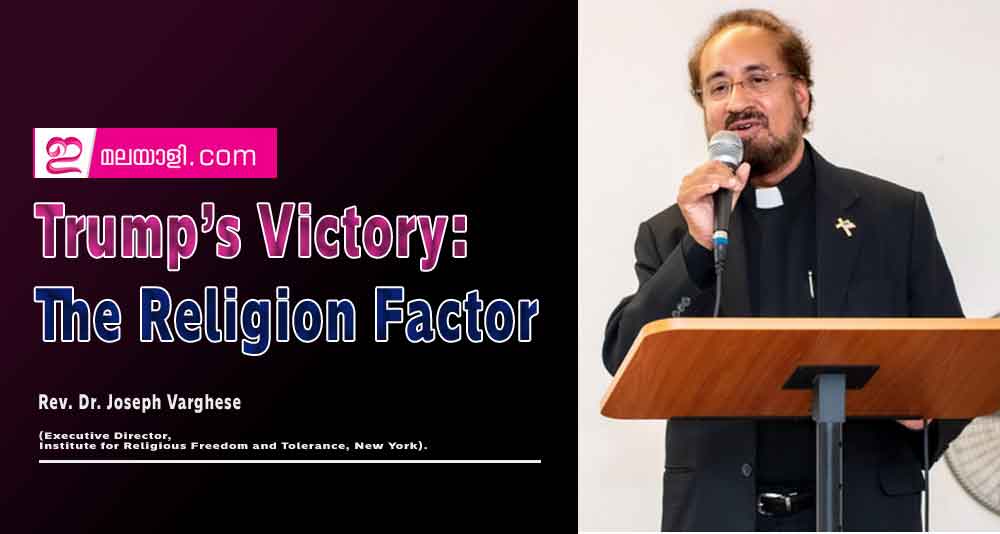America
Trump’s Victory: The Religion Factor

Nov 9 :
Donald Trump’s re-election in 2024 hinged on the strong support of Christian voters despite the Church group like National Council of Churches tilted to the left and to the Democrats. The strong support from the White Christians who comprising 42% of the population, proved effective in the victory of Trump. The exit polls came out which revealed that 72% of white Protestants and 61% of white Catholics backed Trump. Among white evangelicals, support rose to 81%, up from 76% in 2020.
The Christian Nationalism and the effect on the Vote Bank:
Christian nationalism emerged as a significant factor in the election. States with higher levels of Christian nationalist beliefs showed stronger support for Trump. This trend was particularly pronounced among white voters.
The election highlighted the complex interplay between religion, race, and politics in America. It demonstrated the enduring influence of Christian voters in shaping national elections. As the country continues to grapple with changing demographics, the role of faith in politics remains a crucial factor to watch.There was a clear resistance from the mainstream Christians against the stand adopted on the Christian nationalism by the Christian Church’ apex body, the National Council of Churches in the USA. The recent resolution produced by the National Council of Churches on Christian Nationalism may have helped in galvanizing support from the mainstream Christian population. The resolution on Christian Nationalism by NCC which stated that “The contemporary ideology, Christian nationalism, is of great concern to the members of the National Council of Churches and, indeed, to all Americans who are committed to justice and peace” may have received the support from the Black Churches and from other religious groups. But there was a strong resentment from the White Christian Churches and the conservative Christians for the extreme position taken by the National Council of Churches and its tilt towards the left.
The other factor which appeared in galvanizing the Christian Right was the extreme position adopted by the Democrats on abortion and LGBT causes. Though the churches are always sympathetic on human rights and freedom to choose, any initiative by the left must be included the mainstream christian population. Unfortunately, this gap was so wide and couldn’t find a common ground for reconciliation. The immigrant churches also afraid on the extreme stand taken by the Democratic Party and seemed supportive of the Trump’s agenda rather than the ’no-agenda’ of Harris. Because of this, the Trump’s appeal extended beyond white Christians and gained significant support from Hispanic Christians as well. Nearly two-thirds of Hispanic Protestants and over half of Hispanic Catholic voters supported him. This marked a substantial increase from 2020, when only a third of Hispanic Catholics voted for Trump.
This year’s election highlighted the deep connection between religious affiliation and political leanings. White Christians remained firmly aligned with the Other religious groups, including Jews, Muslims, and Black Protestants, largely supported the Democratic candidate, Kamala Harris.
There are economic concerns also played a significant role in shaping voter preferences among minorities. Many Hispanic Christians cited financial issues as a key factor in their support for Trump. The rising costs of everyday expenses influenced voters across various demographics.
This election also revealed shifts in voting priorities among different religious groups. White evangelicals increasingly cited illegal immigration as a critical issue where as the Black Protestants emphasized racial inequality and healthcare as top concerns. Trump’s supporters believe “this is a Presidency with God on their side”.



































